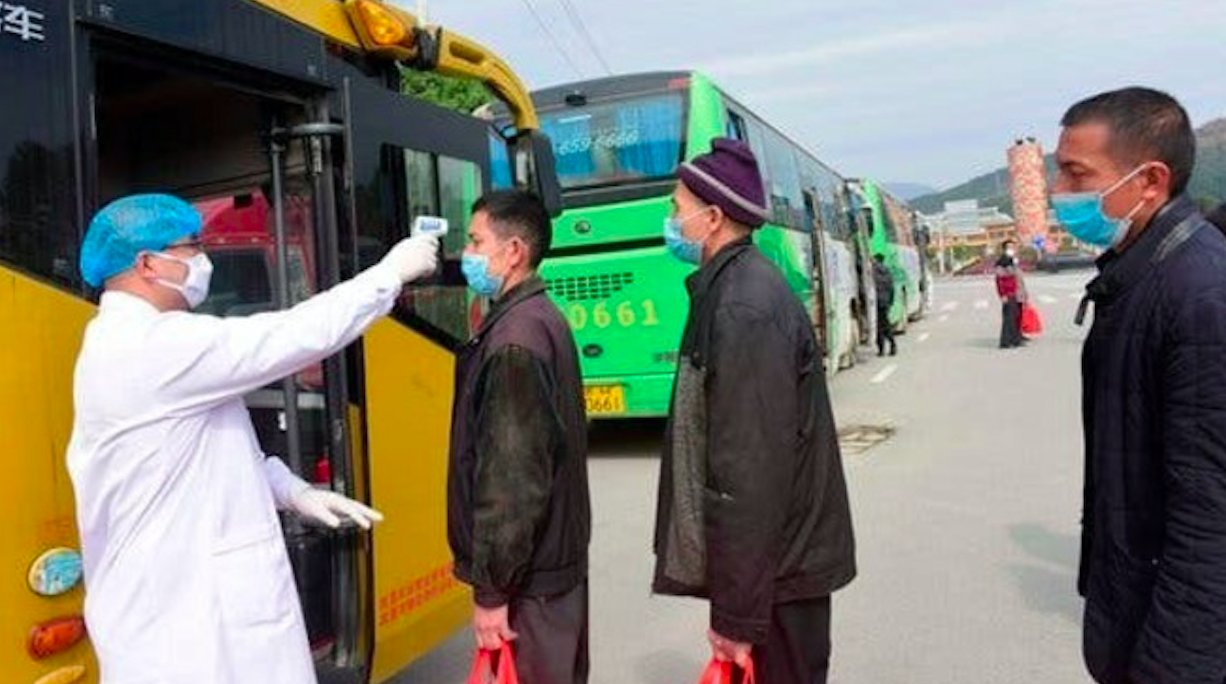
Featured Image: Agence France-Presse — Getty Images)
By Jack Tripp
Over the past two decades, China’s migrant workers have contributed greatly to the country’s economic growth. They are unlike the migrants seeking work in America or Europe, in that they never cross an international border, most Chinese migrants moving semi-permanently to cities or factory towns within China. Furthermore, while many migrants in the United States and America are seasonal, seeking work in agriculture and then returning home after the harvest, China’s migrants move from rural areas to urban centers, where they find jobs in services, construction, or manufacturing.
Migrants internationally have been some of the most threatened populations during COVID-19, and this applies no less for China’s migrants. Even though they only travel domestically, pre-COVID they often did not have full access to the public services offered to other citizens in China.
The hukou system in China is designed to register families and households. It predates the current Communist state and was originally conceived so that families would remain in rural areas and there would be enough food to support the cities. However, as China’s economy has liberalized, the hukou has become a hindrance. The China Labour Bulletin—an organization based in Hong Kong committed to protecting China’s workers—describes the hukou as a passport, inherited through generations and issued by towns or cities. This effectively means that individuals with parents born in a rural area—even if they themselves were not—would also be registered as rural inhabitants. Therefore, not only is their physical freedom of movement within China limited, but also their social mobility and their ability to earn income for themselves and their families. In rural China, opportunities are scarce.
As migrants make their way from their rural familial homes to growing cities, they cannot access the services that long-term inhabitants can. This means that only 17% of migrants have unemployment insurance and many do not have adequate healthcare. Once they retire, they cannot collect pensions. Furthermore, a majority are long-distance migrants. Those that bring their families along in a more permanent move will likely not be able to enroll their children in public schools or register them for healthcare. The China Labour Bulletin reports that certain regional governments—such as Shenzhen and Hangzhou—have worked to rectify these issues. There has been little concerted effort, however, thus far at the national level.
Although migrant workers constitute a minority among Chinese citizens, they are a large minority. At the end of 2019, the Peterson Institute for International Economics calculated that there were 290 million migrant workers in total––a fifth of China’s population. This is almost twice the number of transnational migrant workers globally, who have garnered strong public support from organizations like Human Rights Watch in the past as reported by the Triple Pundit.
Already plagued by loneliness, isolation, and 10-hour workdays, COVID significantly complicated the lives of these migrant workers. The New York Times reported in late February that as China was placed on lockdown, many migrants living in cities were evicted from their homes. Because movement in and out of many urban areas was prohibited, they then had nowhere to go and were left homeless.
Meanwhile, many other workers returned to their rural hometowns to celebrate the Lunar New Year on January 25 and so were away from their jobs—and perhaps what they consider their permanent homes—when the outbreak began. Wuhan—the epicenter of the pandemic—shut down on January 23, and in the ensuing weeks, successive lockdowns throughout China prohibited those who had traveled from returning to where they were formerly employed. It was an unfortunate and unanticipated confluence of events. As reported by the South China Morning Post, in the following months migrant workers struggled to feed their families with no income and panicked over accumulating debt.
It is clear as of now that the pandemic is far from over, even in China where a relatively swift and effective lockdown—aided by the Communist Party’s authoritarian control—has helped to mitigate the spread of the virus. On June 13, multiple media sources reported that there was a renewed outbreak from a food market in Beijing, after cases had been dwindling. DW News reports that over 500,000 people in Beijing are currently back under full lockdown—the same restrictions imposed on Wuhan at the virus’ peak. With a potential second wave approaching, how will migrants support themselves and their families, as China enters its sixth month of COVID disrupting daily life?
As usual in times of crisis, migrants will be particularly hard-hit. The New York Times described how local officials and employers have been perpetuating fears that migrant workers could spread the virus further. At the end of May, Reuters reported that migrants were beginning to make their ways back into cities. However many could not return to their original jobs—either because their place of employment had closed permanently or their employers would not take them. With little safety-net to fall back on, they will likely struggle until work resumes. However, there is a bright side. Migrant workers make up 36% of China’s workforce, and as life resumes and industry commences, hopefully those in power will see that China cannot operate without them.
Jack Tripp is a rising sophomore in Benjamin Franklin College. You can contact him at jack.tripp@yale.edu.